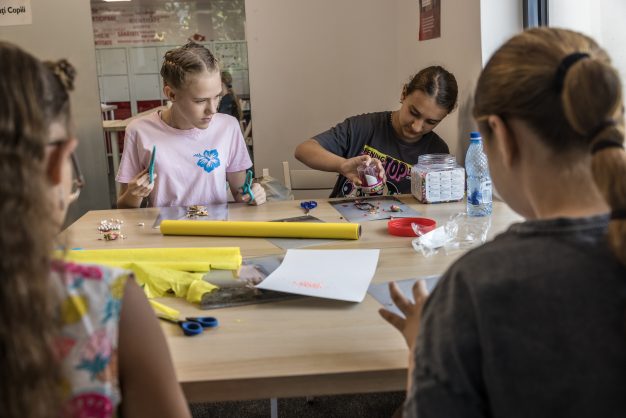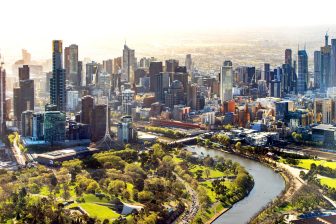
Celebrating 100 years of the rights of the child through creativity
It is 100 years since children’s rights were formally – and finally – recognised in a landmark document by Eglantyne Jebb, founder of Save the Children.
The world has changed immeasurably since 26 September 1924 when the Geneva Declaration on the Rights of the Child came into existence, yet what will always endure is the inalienable right of every child to expect certain freedoms and liberties.
As we are all painfully aware however, many outside influences mean that realising these rights are often out of a child’s control. War, famine, abuse, the list goes on.
But what gives hope, and will always do so, is the voice of children, and how they can express themselves in voicing how they see their futures, and what they want in order to make their lives better.
It’s fitting then, a century later, that Save the Children have been harnessing youngsters’ creativity to show what is important them, to mark this very special global recognition of child rights.
Children from Indonesia, Syria and Ukraine have, with the help of photographers, used diverse objects ranging from seashells to paper clips to create photo montages and poems to illustrate what is important to them. The idea was to use their creative sides to combine these objects with images of themselves to celebrate their optimism, but also warn of the risks when progress stalls.
‘Harnessing youngsters’ creativity to showcase their hopes’
Using flowers, shells, leaves, and paper clips, children from Indonesia, Syria and Ukraine have created photo montages and written poems to show what is most important to them to mark 100 years of the global recognition of child rights.

Working with three award-winning photographers, children were encouraged to get creative by combining photos of themselves with everyday items for mixed media projects that celebrate their optimism and hopes for the future but also risks if progress on their rights stalls or is reversed.
Elin, 15 from Sumba, Indonesia, said she was passionate about protecting the ocean but worried about the impact of climate change. She collected sand and shells while swimming and combined them with her photo portrait, writing the following poem. “In this scorching world, I have the right to be happy. I have the right to breathe fresh air. I have the right to access clean water, because my study time is not to fetch water. Together, we can protect the nature, because I am human, you are human, we are human.”
Anjar,18, from Indonesia tackles the lack of access to clean water in his friend Sandi’s village. Together, they designed a borehole that brought running water to the village for the first time. Anjar is worried about the impact of deforestation and used his artwork to portray himself as a warrior protecting the trees that he loves, using rocks and plants he has gathered.
“We have to learn and guard our nature, so it won’t be destroyed”, said Anjar, who was supported by Save the Children’s Inclusive Incubator for Young Changemakers (i2Change) programme which gives young people the chance to learn how to create a project that will change their community.
In Romania, eight-year-old Marko* is trying to rebuild his life and make new friends after he fled Ukraine with mother when the war broke out.
It took him months to settle into school, but with support from Save the Children’s hub in Romania, he is now more at ease. He made a collage by decorating his printed portrait with colourful clips and pegs. His montage represents his personality, his big dreams for the future and how important his homeland and school are to him.
“I want to be a captain because I would like to travel all over the world”, he said.
Shehab*, 16, is living in Za’atari, Jordan, the world’s largest camp for displaced Syrian refugees. She was born with a disability and bullied at school which made her drop out. At the Adolescent Girls Empowerment Centre, run by Save the Children and the United Nations Population Fund, Jordan is learning self-defence, art and yoga which is helping her find her inner strength.
Her portrait shows the importance to her of the rights to education and protection and includes a caption saying, “Women of the world, unite!”
‘I felt like I was a leader for those children’
“I was destroyed before I came to the centre, now I have more self-esteem and confidence” she said. “When I came here, I learned what children’s rights are and I started raising awareness for others and the younger ones. It’s a very good feeling because I felt like I was doing something for society, I was changing something. I felt like I was a leader for those children.”
The project that ran over three months involves the photographers Ulet Ifansasti from Indonesia, Kate Stanworth from the UK and Oksana Parafeniuk from Ukraine. Despite much progress over the last century, children’s rights are today at risk of being eroded and inequality is growing.
One in five children globally is growing up in a conflict zone and one in 50 is forcibly displaced- twice the number a decade ago, according to Save the Children analysis.Thirty-three children were born into hunger each minute last year [3], while every year, extreme weather events interrupt learning for about 40 million children, a figure likely to rise as the intensity and frequency increase due to climate change.
Inger Ashing, Save the Children International’s Chief Executive Officer said: “So much has changed for children in 100 years. Most children now live to see their fifth birthday. Almost nine in 10 primary and six in 10 secondary-age school children complete their education. The vast majority are no longer forced to engage in the kind of work that deprives them of their childhood and harms their development.

“Today, every child has rights – including the right to health, to education, to protection, and to security. They have the right to be themselves, to have their voices heard and to design their futures.
“But this wasn’t always accepted or supported – and still isn’t in many places around the world. Children currently face a world in crisis where their rights are systematically undermined and violated. The vital progress made over the past 100 years is being reversed with catastrophic conflicts for children while children also experience all-too-frequent climate disasters, poverty and inequality.
“Standing up for children’s rights is our history, present, and future. Our work to support children to claim their rights is just as urgent and relevant today as it was 100 years ago and we will not stop until children’s rights are respected, supported, and protected worldwide.”
Save the Children says it calls on leaders ‘to listen to children and to provide safe, meaningful, child-friendly spaces where children can speak freely and their ideas are respected’.
Click here for more information
Additional text courtesy of Save the Children




